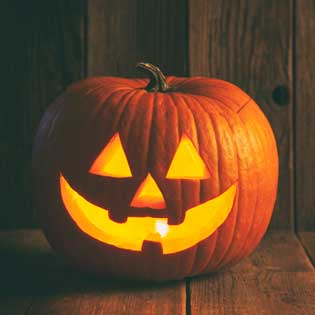
Horror, vegetarianism, and the politics of consumption in the gothic tradition
- Jimmy Packham, University of Birmingham
The nights are drawing in and Halloween has just passed: it is an ideal time to start tucking into our squashes and pumpkin soups, and, in previous years, we may recently have been handing out sweets to roaming bands of trick or treaters. It is a perfect time, too, for telling each other scary stories. But is there any more profound connection between these things – between our food and our horror stories?
A conventional definition of the gothic and horror would likely suggest that these are the literatures of terror, of haunted houses, and of the powers of darkness. Something else, however, links such gothic staples as Frankenstein’s monster, Count Dracula, and zombies: the preoccupations their narratives have with their diets. Vampires and zombies are subjects of horror precisely because of what they eat – namely, us.
The gothic has long had a substantial interest in the political and philosophical connotations of what we eat – and how and why we eat it. Our monsters are a litmus test for the ethical behaviours by which we would define ourselves: they reiterate what forms of behaviour are normal or unproblematic. In particular, a recent trend in gothic fiction and film focuses on the value and meaning of vegetarianism – visible for instance in novels like Han Kang’s The Vegetarian (2007; published in English in 2015) and films like Julia Ducourneau’s Raw (2017).
Since at least 1818, vegetarian ethics have figured prominently in gothic stories: Frankenstein’s monster proclaims the superiority of his ethical worldview by telling his creator that he doesn’t eat meat: ‘I do not destroy the lamb and the kid, to glut my appetite’, he tells Victor. In The Vegetarian, the protagonist Yeong-Hye stops eating meat after suffering a series of troubling nightmares, and then begins opting out of almost all forms of consumption completely. The novel explores the difficult – even impossible – prospect of trying to live wholly nonviolently or in completely ecologically friendly ways. Yeong-hye establishes an ethical standard she cannot ever really meet. These ‘vegetarian horror’ stories call attention to the persistent violences that underpin human interactions with the nonhuman world, while also insisting on a shared sense of being and belonging in (and to) the world.
What is ultimately of value in paying attention to these narratives is not how they offer uncomplicated portraits of the best ways of engaging with the world: Yeong-Hye’s choices are figured as horrific as much as they are admirable. Rather it seems that the gothic stages moments of shock and horror in order to urge us to fathom the limits of our own ethics, to estrange us from our everyday actions – such as eating – in order that we might return to them more thoughtfully.
Such work helps us comprehend, too, how gothic narratives frame intercultural encounters: earlier this year, a sinophobic conspiracy theory circulated suggesting that the coronavirus outbreak originated in the consumption in China of bat soup, implicitly stressing the apparent horror invested by humans in certain creatures, and the cultural contingency of notions of proper ways to ‘encounter’ (or consume) the animal.
- Free-to-download article, Jimmy Packham, ‘Children of the Quorn: The Vegetarian, Raw, and the horrors of vegetarianism’, Gothic Nature 1 (2019), 78-104